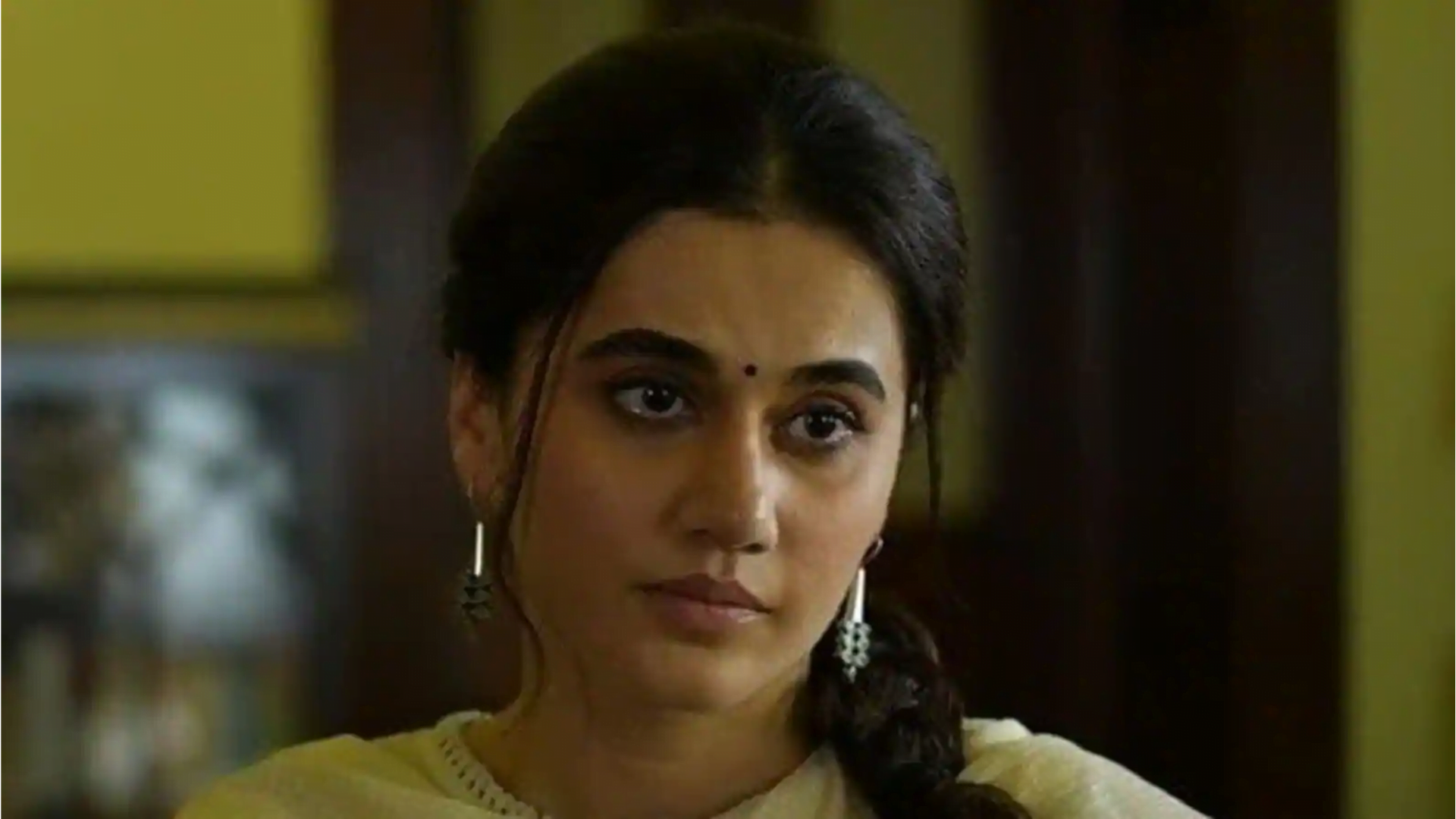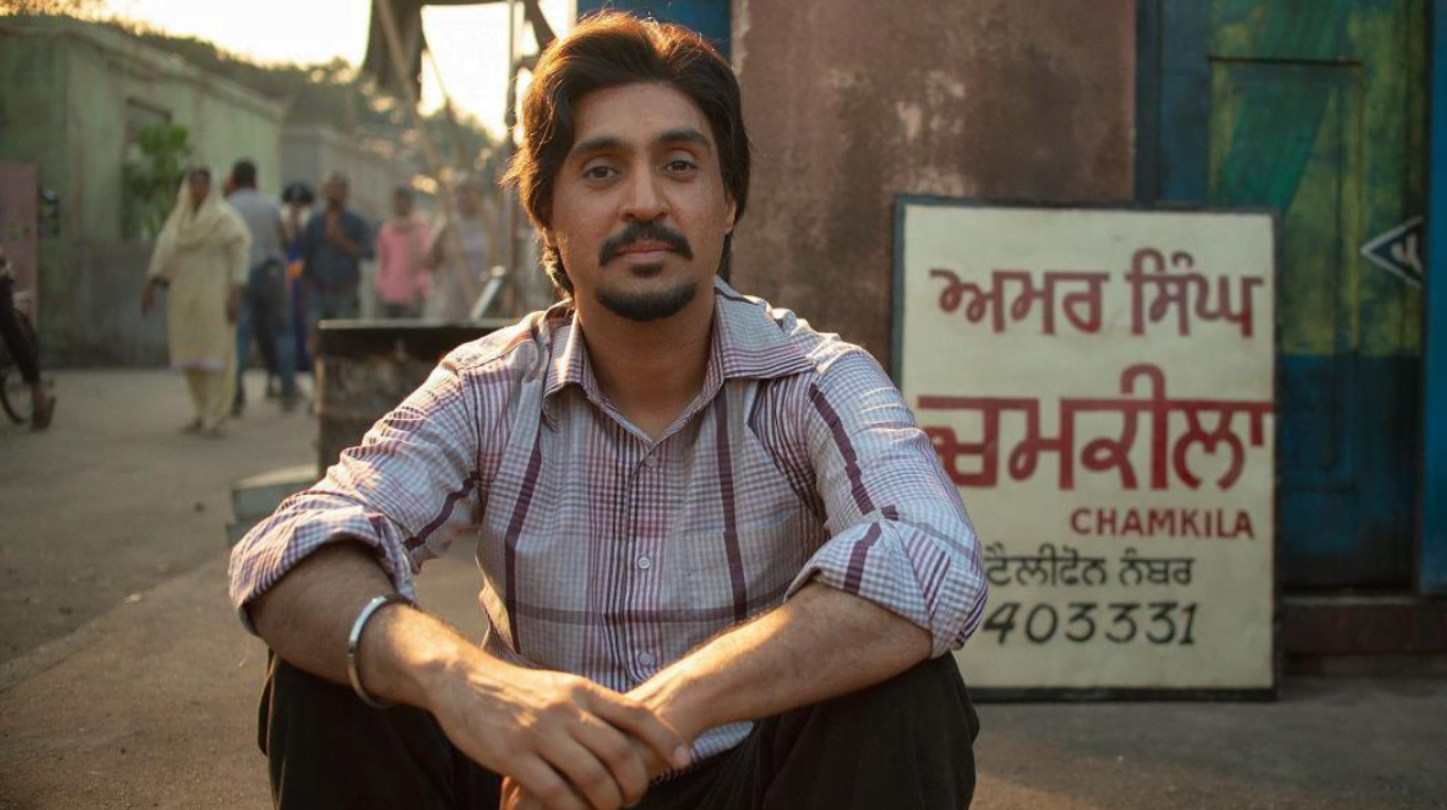The movie Thappad is a story of a woman named Amrita who wants only two things in life — happiness and respect. She has no complaints about her life being a homemaker and fulfilling her social duties as a wife and daughter-in-law until an unfortunate incident happened. Her life turns upside down when her husband slaps her during a house party.
The party was about celebrating her husband’s (Vikram) promotion, after which ‘they’ would be relocating to London. This promotion was one of his husband’s year goals, and she was happy to support him, but when Vikram slapped her in front of everyone, the incident left her shaken. She was unable to feel respected in the house she was taking care of selflessly, the ‘house’ which she thought was her ‘home’ too.
When no one in the house after the night of the incident held Vikram accountable for his action or asked him to apologise to her but rather expected Amrita to tolerate what happened and move on, she realised that all the love and respect that she felt she was getting in the house was not actually for her but for the ‘daughter-in-law’ of the house. She could not justify the slap to her own consciousness and what seemed more unjustified to her was people’s expectation of moving on with her life as if nothing had happened.
The first scene of the movie begins with the introduction of a female character named ‘Swati’ asking the very fundamental question about the need for marriage itself. The dialogue “But why do we have to get married?” questions the very need for the existence of this institution called marriage in the larger realm of society. If two people want to be together, why can’t they just be without somebody being the ‘wife’ and somebody the ‘husband’?
Amrita decided to file for a divorce when her husband sent her a legal notice to come on. Just a slap from a husband seemed a trivial reason to society for a wife to be asking for a divorce. Things got more complicated when she found out she was with a child. The story then proceeds further, challenging various social constructs around marriage and the dignity of a woman in Indian society.
This story is not just about Amrita but also revolves around the other female characters in the movie — her neighbour (Shivani), who is a widow and has a daughter (Sania), her house-help (Sunita), about her brother’s girlfriend (Swati), about her mother (Sandhya), about her mother-in-law (Sulakshana) and about her lawyer (Nethra) who fought her legal battle.
Introductions and debates
The beginning of the movie interestingly introduces a few female characters of the movie and very subtly highlights some of the major debates around the social institution of marriage. Moreover, it compels us to ask some fundamental questions about the utility of marriage itself and the unbalanced equation shared by its participants as ‘wife’ and ‘husband’.
The first scene of the movie begins with the introduction of a female character named ‘Swati’ asking the very fundamental question about the need for marriage itself. The dialogue “But why do we have to get married?” questions the very need for the existence of this institution called marriage in the larger realm of society. If two people want to be together, why can’t they just be without somebody being the ‘wife’ and somebody the ‘husband’?
The following scene introduces another female character in the movie named ‘Nethra’ and subtly points out the plural roles that a woman plays in society leading to the plural identities of a single woman. The dialogue “Who are you?” latently highlights the plural roles that the female character plays as a ‘professional’ in the co-operate world, being a lawyer, a wife in a marriage or a woman just being an individual. It can further lead to debates around the hierarchy of these multiple roles.
The women in the film are represented through different social locations and represent the plurality of womanhood. For all these women, ‘being a woman’ holds different definitions of personal and public. They engage differently with the reality of life and hold different spaces in the larger institution of the family. These differences allow them to have different agencies of choice and resistance.
The third introduction in the movie is of Amrita’s mother named ‘Sandhya’. This scene also includes Amrita’s father, who is revealing to Sandhya what her father said to him on the day of their marriage, “He cried and said if she does anything wrong, forgive her“. The scene somewhere represents the hierarchy of the relation in a marriage, which further represents the power relations. The prior understanding and assumption of the society that the one who has the authority to forgive is the husband and the one who needs to be forgiven is the wife.
The next scene is about introducing another female character in the movie named ‘Shivani’ whose daughter is telling her that she needs to find a good man in order to get settled in life. This scene calls for attention to the ideology that is so deeply embedded in socialisation that even a child believes that a woman is not ‘settled’ in life unless she has a man in her life, even if she feels content with her life being a successful independent professional and being a mother.
The last introductory scene is of ‘Sunita’, where her husband is taking her back home from a doctor’s appointment as they were not able to conceive a child. It subtly reflects the popular notion of the society around motherhood that it is only a woman who can be unfit (infertile) to be a mother and a man can never be unfit to be a father as her husband never asked for his medical examination to search for the cause of them not conceiving a child.
Plural representation of women
The movie engages with the ‘plural representation of women as these women who are shown in this movie all come from different social positions. Shivani is a financially independent single mother who rides Mercedes and is found of new cars. Nethra is a profound lawyer and is financially sound but has a problem in her personal sphere as her husband always makes her realise that whatever she is today is because of him and his father (who is now a sick retired judge).
It shows how motherhood is not an individual act but involves family structures and norms around it. It also calls for attention to closely unpack the hierarchy of agency over a child in a family. Who gets to make the major decisions for a child? Which school would they go to? What subjects would they study in school? What is the age at which they would have to get married, especially if it is a girl child in the Indian context?
While Sunita works as a house-help, has no children and lives with her alcoholic husband and mother-in-law, who always fights with her and wants her to give them a grandchild. Her husband beats her up every night and blames her for not having a child thinks that it is his right (right of a husband being a man) that he can beat her anytime he wishes to, as he says, “Do I need a license to hit you?”.
The women in the film are represented through different social locations and represent the plurality of womanhood. For all these women, ‘being a woman’ holds different definitions of personal and public. They engage differently with the reality of life and hold different spaces in the larger institution of the family. These differences allow them to have different agencies of choice and resistance, which I will be talking about later in this article.
The realm of personal and public
The movie engages with the debates around personal and public. When Amrita feels that she can’t love her husband anymore because she doesn’t feel respected in ‘his’ house and wants to have a divorce, he says, “It’s a family matter“, and his constant worry is not about what she is going through but what would people be thinking about him. For him, his public image is more important than his personal, but he expects her to prioritise her personal as if she has no public at all.
And even if Amrita has, she should forget about it because Vikram was so emotionally invested in his company for the past three years and was waiting for this promotion, and when he was asked by his boss to work under somebody else after the promotion, he just couldn’t take it and slaps her. At this point, where he has frustration being a co-operate servant and cannot retaliate in his position, he pacifies his anger through another social location. Being a husband in a patriarchal society, he is on the upper ladder of the hierarchy.
Child as a commodity in the institution of family
As the story moves forward, Amrita realised that she is pregnant. When she tells this to her husband, he asked her to forget everything that is happening and start fresh, but when she refused, he gets furious and challenges her in a legal battle for the sole custody of the child. As he says, “You can do whatever you want to, but my child will not go anywhere.” This dialogue was an entry point for me to engage with the idea of motherhood here when he calls the child ‘his’ child.

Despite all, Vikram thought that it was his natural right to have the child being the father of the child who is in the mother’s womb, and Amrita should have no right to the child if she decides to leave him. Their child is still ‘his’ right.
This made me think about the concept of ‘Family dysfunctionality’ where the mother is wondering where she went wrong in transferring the cultural norms to her daughter that she is asking for a divorce today. The mother is questioning herself and her daughter for the marriage that is on the verge of breaking. The same instance also highlights the common understanding of a mother that women have to learn tolerance to keep the family together. A woman has to suppress her feelings in order to keep the family functional.
It shows how motherhood is not an individual act but involves family structures and norms around it. It also calls for attention to closely unpack the hierarchy of agency over a child in a family. Who gets to make the major decisions for a child? Which school would they go to? What subjects would they study in school? What is the age at which they would have to get married, especially if it is a girl child in the Indian context?
All these questions and many more need to be talked about to make sense of the hierarchy of agencies that comes to play in a child’s life in the Indian context. Largely it is the male members of the family, be it the father or grandfather, who have more say in these matters rather than the mother or grandmother.
The idea of motherhood: mothers don’t have a choice
Connecting to this point of motherhood and the social norms around it, another dialogue that caught my attention was of Amrita’s mother. When she got to know that her daughter wants a divorce from her husband, she shared with her husband that she never thought she would see a day when her daughter would ask for a divorce. “We raised her well, educated her, married her into a good family.” She was wondering where it all went wrong.

This dialogue made me think about the concept of ‘Family dysfunctionality’ where the mother is wondering where she went wrong in transferring the cultural norms to her daughter that she is asking for a divorce today. The mother is questioning herself and her daughter for the marriage that is on the verge of breaking. The same instance also highlights the common understanding of a mother that women have to learn tolerance to keep the family together. A woman has to suppress her feelings in order to keep the family functional.
Similarly, Amrita’s mother-in-law ‘Sulakshana’, in the earlier part of the movie, communicated through dialogue “, I ran the house, the children are settled. My work’s done.” That a mother’s job is to take care of the household and take all of its household responsibilities (obviously not the financial ones) until the son of the house is married and brings another woman to play the role afterwards.
When Amrita files for the divorce, her mother-in-law also advises her to let it go by saying that women should learn to suffer a bit. Suffering is one of the ‘values’ that is imparted in women since childhood through socialisation, and one of the major agents of this socialisation as mothers themselves. A mother teaches her daughter the societal norms and expectations of a woman as she learns them from her own mother.
The movie tries to challenge these norms and expectations for some of its characters. I say ‘some’ because it again needs a close examination of the social location of the female character who is able to resist this normalised idea of suffering and tolerance for a woman as another female character in the same movie ‘Sunita’ may not have the resources for resistance.
Agency of choice and resistance
The story is well written as it tries to open up the layers of daily violence that are usually normalised as they come under the periphery of “family”. The movie has a plural representation of women; thus, we could inspect it from various aspects, but one aspect that I found prominent was ‘choice’.
Choice — who has the choice? Amrita has a choice of being a house-wife and to give the divorce or not. She had a choice of resistance. Shivani did have a choice to marry again or not. Nethra, when in the end, decides to leave both the men in his life, had a choice to leave her ‘father-in-law’s office because she is capable enough with enough resources, both social and financial, to open her new office and have a new start of her own. But Sunita didn’t have a choice. She cannot leave her husband because she is financially dependent on him. When she says, “If he locks me out of the house someday, where will I go?” the fear is real as she has nowhere else to go if she decides to leave him.
Nonetheless, she did resist in her own way by returning the extra two thousand rupees that Vikram gave him (as a raise in salary) after Amrita left the house and by leaving the work too for his house. That was the only bit where she could have shown resistance to the cost of being beaten again by her husband. Most of the other women had a choice in the film other than her.
The representation of ‘Sunita’ is important to be considered as it depicts the dignity of a woman in a lower socio-economic household. A marriage where a woman is somebody to work outside at home then come back to work at home and yet never receives a kind word from the family in return. Moreover, the woman is a victim of physical abuse and violence on a daily basis.
Also read: WCC, Hema Commission And The Fight To Address Systemic Abuse In The Malayalam Film Industry
Conclusion
Thus, the movie shows how gender is more than just a mental attitude, but it is also about resource distribution, it is also about class, and it is also about resistance. The movie somewhere is made through the lens of post-structural feminism as it shows power as unstable and shifting. Also, it gives an opportunity to engage with a multiplicity of resistance as it does a plural representation of women.
The movie opens up some doors to have conversations about how a family is also a site of violence and how gender is enmeshed in social structures, practices, rituals and customs. How gender is not a singular identity, but it is also about social structures and about locating your own position in those structures and also about plural forms of resistance and mobility.
The movie is about distributing and re-distributing of resources, may they be material or symbolic. In conclusion, it is concerned with how social locations and power act in specific local sites and how power and power relations are negotiated in the institutional realm of marriage and family; as Amrita asserts, “Usne mujhe mara…pehli baar…nahi maar sakta…bas itni si baat hai!”(He hit me…for the first time…he can’t…that is the only thing.” That isn’t the only thing; there are many more things.
Also read: 8 Series For The Feminist In You To Binge-Watch
Shalini is a postgraduate in Education from Ambedkar University, Delhi and is currently working in the Department of Teacher Education, NCERT, with research interests revolving around gender, storytelling and themes around language(s). Shalini can be reached on Instagram and LinkedIn.





The way movie ” Thappad” elaborated is excellent….👍
👏🏾♥️